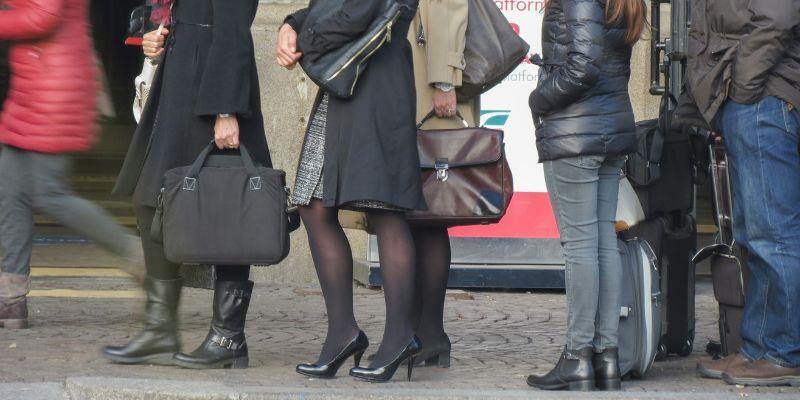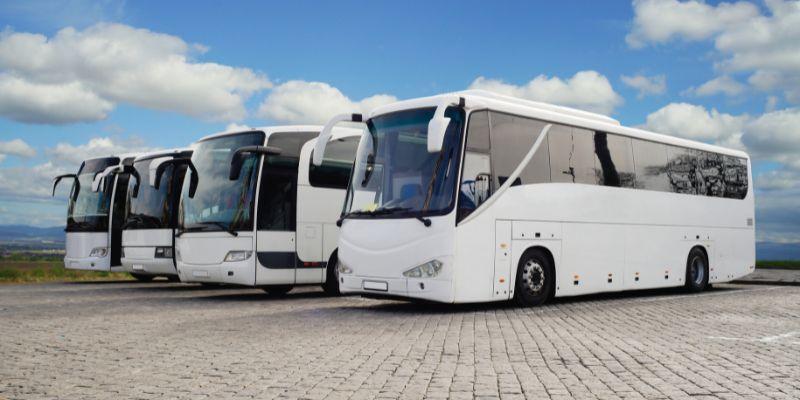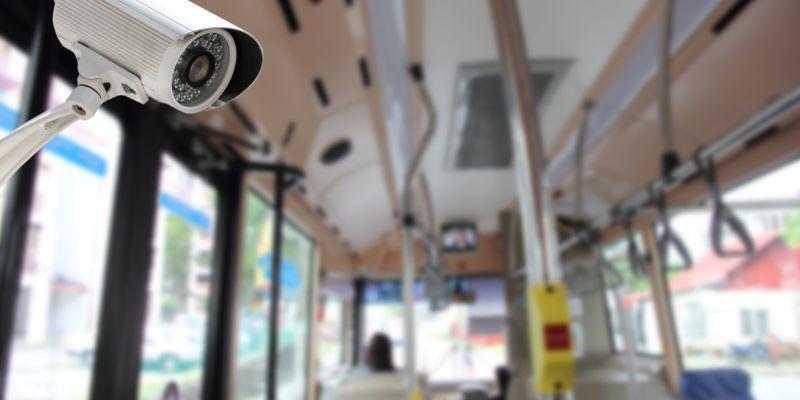Bus stops play a fundamental role in shaping the overall public transportation experience. They serve as passengers’ first point of contact and can significantly influence their perception of the entire journey.
A well-designed bus stop can significantly improve passenger comfort, convenience, and satisfaction, making public transportation more attractive and viable for everyone.
Features such as shelter, seating, and clear information contribute to a positive waiting experience.
This blog post discusses practical strategies and best practices for improving passenger experience at bus stops, focusing on ways to ensure a pleasant, safe, and efficient wait for all passengers.
How to Improve Bus Passenger Experience at Bus Terminal
Improving the passenger experience at bus terminals is crucial for encouraging public transportation use and ensuring commuter satisfaction. Here are several effective strategies to consider.
1. Break Long Routes into Shorter Ones
Breaking long routes into shorter pieces and connecting the route ends in transit hubs for easy transfer can significantly improve efficiency. Shorter lines make operations more straightforward and predictable, leading to fewer delays and more reliable service.
Additionally, this segmentation allows for more frequent services in each segment, reducing passenger wait times. It also facilitates better handling peak-hour traffic, as buses can be deployed flexibly across different segments.
This change can significantly enhance the customer experience during transit, making the journey smoother and less stressful. Ultimately, shorter routes contribute to a more robust and efficient bus network, encouraging more people to opt for public transportation over private cars.
2. Eliminate Cash Payments in Favor of Chip Cards
Eliminating cash payments and collaborating with convenience stores to sell chip cards can streamline the boarding process. Implementing all-door boarding with additional fare card readers would allow even shorter dwell times, speeding up the process and reducing delays.
This system improves passenger comfort on buses and optimizes overall bus service operations. Furthermore, eliminating cash transactions reduces theft risk and simplifies transit authorities’ fare collection.
It encourages passengers to plan their journeys, contributing to a more organized boarding process. By reducing boarding times and developing the payment system, passengers can enjoy a more efficient and hassle-free experience, making public transit a more appealing option.
3. Incorporate Queue Management Systems
 Implementing effective queue management systems at bus stops can significantly augment public transit upgrades and improve passenger satisfaction. Here are some methods:
Implementing effective queue management systems at bus stops can significantly augment public transit upgrades and improve passenger satisfaction. Here are some methods:
- Linear Queue System: Organize and manage passenger queues at bus stops. This system ensures orderly boarding and reduces the chances of conflicts or confusion.
- Virtual Queue System: This allows passengers to join the queue remotely and receive notifications when it’s their turn. This reduces physical crowding and makes the waiting experience more comfortable.
- Ticket Counters: Provide ticket counters at bus stops to modernize the boarding process and reduce wait times. This will help manage the flow of passengers efficiently.
- Digital Signage: Install digital signage at bus stops to display queue information, estimated wait times, and boarding instructions. This will ensure passengers are well-informed and reduce anxiety related to uncertainty.
- Mob Queue App: Develop a mobile app that allows passengers to join the queue virtually, receive updates, and access real-time information about bus arrivals and departures. This modern solution develops customer experience in transit by leveraging technology to simplify the process.
These strategies collectively improve the transit user experience, ensuring that passengers have a more organized, efficient, and pleasant journey.
4. Eliminate About 25% of Bus Stops
Eliminating about 25% of bus stops, especially in areas where stops are located on each block, can help speed up bus travel times. This reduces the number of stops a bus has to make, leading to a smoother and faster journey for passengers.
The selection of which stops to eliminate should be based on public input and boarding data to ensure that the most frequently used stops remain operational.
This approach can improve public transit upgrades by making bus travel more efficient without significantly inconveniencing passengers.
Fewer stops mean less time spent idling and more time moving, which improves overall transit efficiency and passenger satisfaction.
5. Negotiate with Local Government for Signal Priority and Dedicated Bus Lanes
Negotiating with the local government to implement signal priority, queue jumpers, and dedicated bus lanes in strategic areas can significantly improve bus travel speeds.
These improvements should focus on areas where other upgrades still leave buses traveling at below-average speeds. Signal priority allows buses to move through intersections more quickly, while dedicated lanes prevent buses from getting stuck in traffic.
These measures are essential for improving commuter satisfaction by ensuring buses run on time and passengers reach their destinations faster. By working closely with local authorities, transit agencies can create a more efficient and reliable bus system that attracts more riders.
6. Tier Services into Clearly Differentiated and Branded Service Types
In larger cities, tiering services into clearly differentiated and branded types such as local buses, rapid buses, circulators or shuttles, and commuter buses can help passengers quickly identify and choose the best service.
Services at the top of the hierarchy, such as rapid and commuter buses, should have the highest ridership and the fastest routes.
Clear branding helps passengers understand the level of service and the expected speed of their journey, contributing to optimizing passenger experience by providing clarity and choice.
This structured approach can make public transit more user-friendly and appealing, encouraging more people to use buses for their daily commutes.
7. Clean and Maintain Buses Well and Buy Higher-End Models
 Cleaning and maintaining buses well and investing in higher-end models can significantly improve passenger comfort. Quieter buses offer a smoother ride and are fuel-efficient, creating a more pleasant travel experience.
Cleaning and maintaining buses well and investing in higher-end models can significantly improve passenger comfort. Quieter buses offer a smoother ride and are fuel-efficient, creating a more pleasant travel experience.
Recent model hybrid buses have caught up with European Standard City buses in design and ride comfort, providing passengers with a high-quality travel experience. Regular maintenance ensures buses are reliable and safe, improving the customer experience during transit.
By focusing on the quality and upkeep of buses, transit authorities can make public transportation a more attractive option for commuters. Clean, well-maintained buses show that the transit system values its passengers, leading to higher satisfaction and increased ridership.
8. Provide Proper Information about Buses, Routes, Times, etc.
Providing good information about bus routes, times, and transfers is crucial for improving the customer experience in transit. Information should be available on paper, online, on the bus, and along the route so passengers know exactly where buses go and transfers are located.
Digital displays at bus stops with real-time bus arrival and departure times significantly add to passenger convenience.
Additionally, offering mobile apps and interactive kiosks for trip planning and service updates allows passengers to access information quickly and plan their journeys more efficiently.
These tools help passengers feel more in control of their travel, reducing anxiety and making public transportation more appealing.
9. Provide Some Basic Amenities at Bus Stops
Providing basic amenities at bus stops, such as shelters sponsored by private industry, can significantly improve passengers’ waiting experience. Shelters protect passengers from weather elements, providing comfort and safety.
Benches and seating areas allow passengers to rest while waiting for their bus. The more reliable and predictable the service becomes, the fewer passengers will need extensive amenities, but the presence of basic ones can significantly increase passenger comfort on buses.
These amenities show that the transit system values users, contributing to higher satisfaction and increased public transportation usage.
10. Staff “Back of House” Operations with Qualified People
Staffing “back of house” operations with qualified personnel ensures a smooth and efficient transit system. These employees handle scheduling, maintenance, and customer service, directly impacting the overall customer experience during transit.
Conducting regular surveys and public forums helps the transit authority understand passenger needs and preferences, allowing it to make informed decisions.
Establishing online platforms for continuous feedback and dialogue ensures that passengers have a voice and that their concerns are promptly addressed.
This proactive approach helps build trust and satisfaction among passengers, leading to a better overall experience and higher ridership.
11. Offer Comfortable Seating
Providing ergonomic, weather-resistant seating at bus stops is essential for passenger comfort. Incorporating benches with backrests, armrests, and ample legroom ensures that waiting passengers are comfortable and supported.
Consider seating options for passengers with special needs to ensure accessibility for everyone. By offering well-designed seating, bus stops can become more inviting and comfortable places, improving passenger comfort on buses and the overall waiting experience.
Comfortable seating makes waiting more pleasant and demonstrates that the transit authority values its passengers’ well-being, contributing to higher satisfaction and increased public transportation use.
12. Implement Robust Safety Measures
 Ensuring well-lit bus stops with clear visibility is crucial for passenger safety. Installing security cameras and emergency call buttons can provide an added layer of security, making passengers feel safer while waiting for their bus.
Ensuring well-lit bus stops with clear visibility is crucial for passenger safety. Installing security cameras and emergency call buttons can provide an added layer of security, making passengers feel safer while waiting for their bus.
Maintaining well-marked crosswalks and accessible pathways ensures passengers can safely navigate to and from bus stops.
These measures collectively boost the customer experience during transit by creating a safe and secure environment and encouraging more people to use public transportation.
13. Leverage Connectivity Solutions
Offering free Wi-Fi connectivity at bus stops can significantly improve the passenger experience. Passengers can stay connected while waiting, making their wait time more productive and enjoyable.
Installing USB charging stations at bus stops provides added convenience, allowing passengers to charge their devices while on the go.
These connectivity solutions improve passenger comfort on buses and make public transportation more appealing to tech-savvy commuters, contributing to increased ridership and satisfaction.
Case Study and Success Story
Exploring real-world examples and success stories can provide valuable insights into practical strategies for boosting the passenger experience at bus stops.
This case study highlights Karachi’s transit agencies’ innovative approaches and proven practices, showcasing the tangible benefits and improvements in commuter satisfaction.
Wavetec’s Digital Transformation for Karachi’s Green Line BRT
Wavetec has partnered with the Pakistani government to significantly improve the passenger experience of Karachi’s Green Line BRT system.
This initiative addresses traffic congestion and enhances the quality of life for over 1.5 million daily commuters.
Critical solutions include a robust security and surveillance system with over 900 cameras, ensuring continuous safety and monitoring across bus stations, routes, and the Operations Control Center (OCC).
Wavetec provided an Operations Control Center with LED video walls for bus locations and CCTV monitoring. A comprehensive communications network was established, featuring LAN at each BRT station, OCC, and Depot and a high-speed backbone data highway.
The real-time passenger information system displays updates at bus stops, significantly enhancing the commuter experience by providing accurate arrival and departure times.
Energy management systems were deployed to ensure transparency and accountability in energy usage, and signal priority at intersections was introduced to facilitate smoother bus transit.
These innovations, combined with a precision bus docking system and a prepaid ticketing system, have greatly improved the passenger experience by offering a safe, efficient, high-quality transit solution.
Collaboration with leading entities like Huawei, Vertiv, and Dahua further optimized the system’s infrastructure and operations, making the Green Line BRT a model of modern public transportation.
How to improve passenger experience at Bus stop – FAQs
What is the purpose of the information kiosk at the bus stop?
Information kiosks at bus stops provide passengers with real-time updates on bus arrivals and departures, route information, and service alerts, making travel more convenient and efficient.
How do bus stop information kiosks benefit the environment?
Bus stop information kiosks reduce the need for printed schedules and maps, reducing paper waste. They also encourage public transportation, which can reduce overall vehicle emissions.
How do bus stop information kiosks enhance the commuter experience?
Information kiosks improve commuters’ experiences by offering easy access to important travel information, helping passengers plan their trips more effectively, and reducing uncertainty about waiting times.
What is the importance of bus stops?
Bus stops are crucial for public transportation. They provide designated points for passengers to board and alight, ensuring the system operates smoothly and efficiently.
How can the bus experience be made more enjoyable?
Provide comfortable seating, real-time travel information, safety features, and amenities such as shelters and charging stations to make the bus experience more enjoyable.
Conclusion
Improving the passenger experience at bus stops involves a comprehensive approach incorporating various strategies.
Key strategies include breaking long routes into shorter ones, eliminating cash payments in favor of chip cards, implementing effective queue management systems, and eliminating about 25% of bus stops for efficiency.
A comprehensive, user-centric approach is crucial for improving the overall public transportation experience. Transit systems can become more efficient, reliable, and appealing by focusing on passenger needs and preferences.
Emphasizing how to improve passenger experience at bus stops can significantly improve commuter satisfaction.
Collaboration between transit agencies, local governments, and communities is essential to creating exceptional bus stop experiences.
Working together, these stakeholders can ensure that bus stops are safe, comfortable, and convenient, encouraging more people to use public transportation and benefiting the entire community.
BOOK A FREE DEMO





